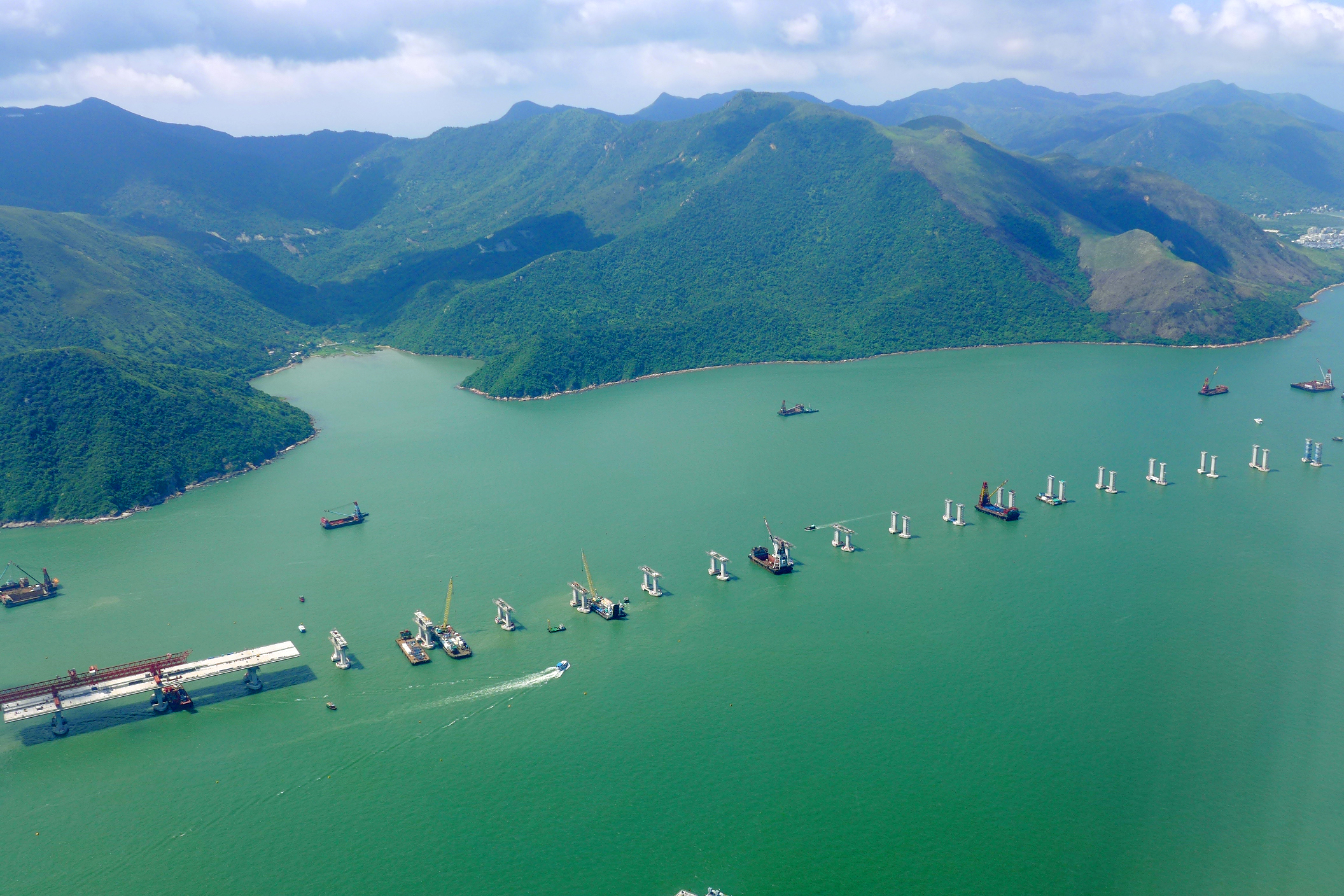ONLY IN HONG KONG would engineering details about a piece of major infrastructure be turned into music.
Hong Kong-born composer Chan Ming-chi noticed that the extraordinary Hong Kong-Zhuhai-Macao Bridge consists of three cable-stayed bridges, one undersea tunnel, and four artificial islands.
So he took the numbers three, one, and four – and turned them into music notation: mi do fa.

The resultant work is played as the prelude to a major new multi-part work called Trail of the Blue Dragon (蒼龍引).
The mi do fa musical motif of the prelude, called The Dragon in the Ninth Heaven, is performed in various positions of the concert hall. “The forms and shapes of the bridges come alive in the music; the dialogue between the percussion group and the drums conjured up a cityscape through the acoustic arrangement,” said a statement from the Hong Kong Chinese Orchestra. The new work will be premiered in Hong Kong tomorrow – Friday November 4, 2022.
A WATERY INSTRUMENT
And that’s not the only extraordinary thing about the new work. Another element is about Lingnan, described as “A place blessed with water”, because of the rivers, lakes and streams that criss-cross the area.

This piece features the zheng, an instrument best suited for the sounds of flowing water, and uses a Cantonese folk song called Rain Is Coming from the Sky as the basic theme.
The orchestra is famed for designing or re-designing classic instruments, and they have developed an electronic version of the traditional instrument.
“The instrument is made of compressed sheets of irregular shaped clear acrylic, forming the flowing water look of drifted objects,” a statement from the orchestra said. “The sound of the instrument also triggers the light bands on the side of the instrument, enhancing the visual effect.”
But not all their instruments are extra techy. Some go the opposite way. A large bowl of water is also featured as an instrument. The splash of hands hitting the water makes a distinctive percussive sound.

If you’ve read this far, you’ll now have realized that the Hong Kong Chinese Orchestra is not at all what you’d expect it to be. People who have never heard it expect classic Chinese sounds of a wailing erhu string or an earthy bamboo flute.
In fact, the traditional instruments are certainly used – but so are untraditional ones, including synthesizers and electronic instruments. The philosophy is simple enough: western music does not confine itself to an ancient era but moves with the times – and this should also be true for eastern music.
So be prepared for driving rhythms that get your feet tapping like a rock song, or sweeping orchestral melodies that would really lift a movie.
And be prepared for great marketing, as well. The orchestra features several times in the Guinness Book of Records for its stunts, such as the time it organized 1,000 erhu players to perform at once.

OPENING MOVEMENT
The orchestra was founded in 1977, with local entrepreneur Hu Fa-kuang campaigning with his fellow members of the Urban Council for public support for an orchestra which celebrates Chinese music and Chineseness. Since then it has never looked back.
The new work, Trail of the Blue Dragon, is the first Hong Kong Chinese music program to have garnered funding from the China National Arts Fund, which has chosen to demonstrate support from the north for the southern city’s musicians.
As a Chinese music conductor of world renown, Yan Huichang (閻惠昌) is the Orchestra’s artistic director and principal conductor for life. Trail of the Blue Dragon will be performed under Yan’s baton. Born in Shaanxi province, he graduated from the Shanghai Conservatory of Music in 1983 and was later conferred the title of National Class One Conductor to become a musical maestro in China.

He served as Principal Conductor and Artistic Director of the China National Orchestra before joining the Hong Kong Chinese Orchestra in 1997.
The Orchestra, chaired by Benjamin Chan Wai-kai, comprises four key sections: bowed strings, plucked strings, wind and percussion. It has explored new frontiers in music by commissioning more than 2,400 new works.

The monumental Trail of the Blue Dragon will have seven movements to show the geographical and cultural characteristics of the Greater Bay Area in music. The speech rhythms of the local dialects, including Cantonese, Chiu Chow, and Hakka – and the musical characteristics of instruments of South China will be pooled together to offer audience a vision of the developments of the Guangdong-Hong Kong-Macao areas.

The electric zeng, mentioned above, is not the only new voice the Hong Kong Chinese Orchestra has brought to the music scene. It has developed what it calls an Eco-Huqin series for its bowed-string section (left).
Instead of using the python skin, as in the original instruments, the Orchestra has found that eco-friendly material, polyethylene terephthalate, better known as PET, is suitable for making instruments including Gaohu (高胡), Erhu (二胡) and Zhonghu (中胡) and Bass Gehu (低音革胡) and Gehu (革胡). The PET-made instruments can handle a variation of temperatures and retain their sound quality. The remodelling of Gaohu, Erhu and Zhonghu (中胡) focuses on the expansion of physical capabilities and preserving their traditional timbre and mode of performance.
The Hong Kong Chinese Orchestra has performed in Europe, North America, Asia, Australia and other places, transcending boundaries and cultures. To add a touch of authenticity to Chinese New Year celebrations, the orchestra staged the 2020 Grand Chinese New Year Concert in multiple locations in Europe: Lucerne in Switzerland, Bonn, Stuhr and Dresden in Germany, Brussels in Belgium, Erl in Austria and Budapest in Hungary.
Meanwhile, the orchestra’s leaders are always looking for new inspiration – and may find it in extraordinary places. Any new bridges or infrastructure been built recently?
Image at the top is montage by fridayeveryday.
